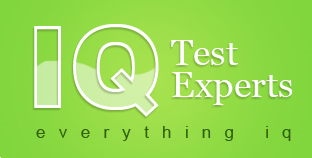Rubik's Cube Improves Spatial IQ
Statistics about the Rubik's Cube
The credit of inventing the 3-D mechanical puzzle Rubik's goes to Hungarian sculptor and professor of architecture Erno Rubik. Originally touted as the "Magic Cube", the puzzle was licensed by Rubik to be sold by Ideal Toys in 1980 and won the German Game of the Year special award for Best Puzzle that year. As of January 2009, 350 million cubes have sold worldwide catapulting its status to the world's top-selling puzzle game.
What is it?
In a classic Rubik's Cube, each of the six faces is covered by 9 stickers, among six solid colors (traditionally white, red, blue, orange, green, and yellow). A pivot mechanism enables each face to turn independently, thus mixing up the colors. For the puzzle to be solved, each face must be a uniform color.
In a classic Rubik's Cube, each of the six faces is covered by 9 stickers, among six solid colors (traditionally white, red, blue, orange, green, and yellow). A pivot mechanism enables each face to turn independently, thus mixing up the colors. For the puzzle to be solved, each face must be a uniform color.
Some handy tips
Half a dozen general stratagems have been devised for cracking the Rubik's Cube puzzle. The most popular method was developed by David Singmaster and published in the book Notes on Rubik's Magic Cube in 1980. This solution involves solving the Cube layer by layer, in which one layer, designated the top, is solved first, followed by the middle layer, and then the final and bottom layer. Other general solutions include "corners first" methods or motley of several other methods.
IQ incentive
Research elicits that solving the Rubik's Cube puzzle can greatly boost the spatial intelligence of the player as it deals with understanding the organizational complexities of structure and spatial transformations which are required to accomplish the desired goal. It also hones the co-ordination and visual/perceptual skills of the player.
The spatial intelligence which is a close cousin of visual/perceptual skills manifests itself in a variety of ways. Interpreting and translating, transforming or tossing mental images is a spatial skill. When a hiker pauses with map and compass, it is the spatial intelligence that conceptualizes the path. Through the spatial sense, a painter "feels" the tension, balance and composition of a painting. A potter, a sculptor, an architect, a civil engineer all put their spatial intelligence to use, in their work field. Spatial ability is also "the more abstract wisdom of a chess master, a battle commander, or a theoretical physicist", as well as the familiar ability to recognize objects, faces, and details.
"Spatial" is not merely a "visual" thing, it includes abstract, analytical abilities that go beyond merely seeing images. Mind maps and outlines are spatial methods of displaying the organizational structure of a thought. Through this kind of visual thinking, one can link thoughts, how realms of thought stack, overlap, or stand adjacent to each other.
Sex differences are more pronounced in tests of spatial skills than for any other intelligence. Males score more highly than females. It is speculated that genetic selection, dating to hunting-gathering days, may be the cause.
Related Articles
Do breastfed children have higher IQ compared to those who are fed formula milk? Does breastfeed bear some inherent advantages which leads to improved IQ? Learn all this and more..
A study published in the American Journal of Clinical Nutrition testifies that breastfed infants scaled 5.2 IQ points higher than formula fed infants, was a comprehensive study involving over 7000 children.
Education and its effect on IQ
Does education influences IQ? Does schooling help increase one's IQ levels? If yes, how far does it go in improving one's IQ? Find out yourself...
IQ is a measure of relative intelligence which is determined by a single or a set of standardized tests, represented as a test score or a graph.
Education on the other hand is the knowledge acquired by learning and instruction over a period of time. It enables one with some fundamental cognition so as to impart an all round grooming. Holistic education is a tool which prepares one for life.

